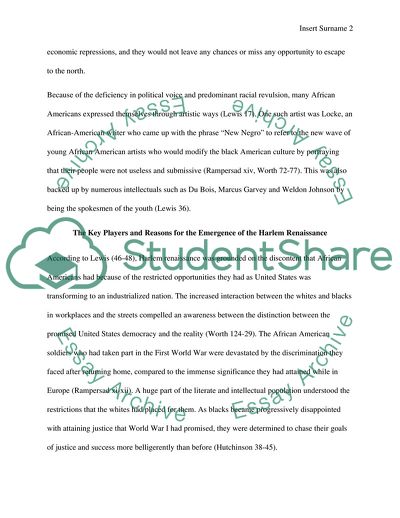Cite this document
(Culture in Vogue - Harlem Renaissance Literature review Example | Topics and Well Written Essays - 1250 words, n.d.)
Culture in Vogue - Harlem Renaissance Literature review Example | Topics and Well Written Essays - 1250 words. https://studentshare.org/culture/1847016-put-the-culture-in-vogue-harlem-renaissance
Culture in Vogue - Harlem Renaissance Literature review Example | Topics and Well Written Essays - 1250 words. https://studentshare.org/culture/1847016-put-the-culture-in-vogue-harlem-renaissance
(Culture in Vogue - Harlem Renaissance Literature Review Example | Topics and Well Written Essays - 1250 Words)
Culture in Vogue - Harlem Renaissance Literature Review Example | Topics and Well Written Essays - 1250 Words. https://studentshare.org/culture/1847016-put-the-culture-in-vogue-harlem-renaissance.
Culture in Vogue - Harlem Renaissance Literature Review Example | Topics and Well Written Essays - 1250 Words. https://studentshare.org/culture/1847016-put-the-culture-in-vogue-harlem-renaissance.
“Culture in Vogue - Harlem Renaissance Literature Review Example | Topics and Well Written Essays - 1250 Words”. https://studentshare.org/culture/1847016-put-the-culture-in-vogue-harlem-renaissance.


